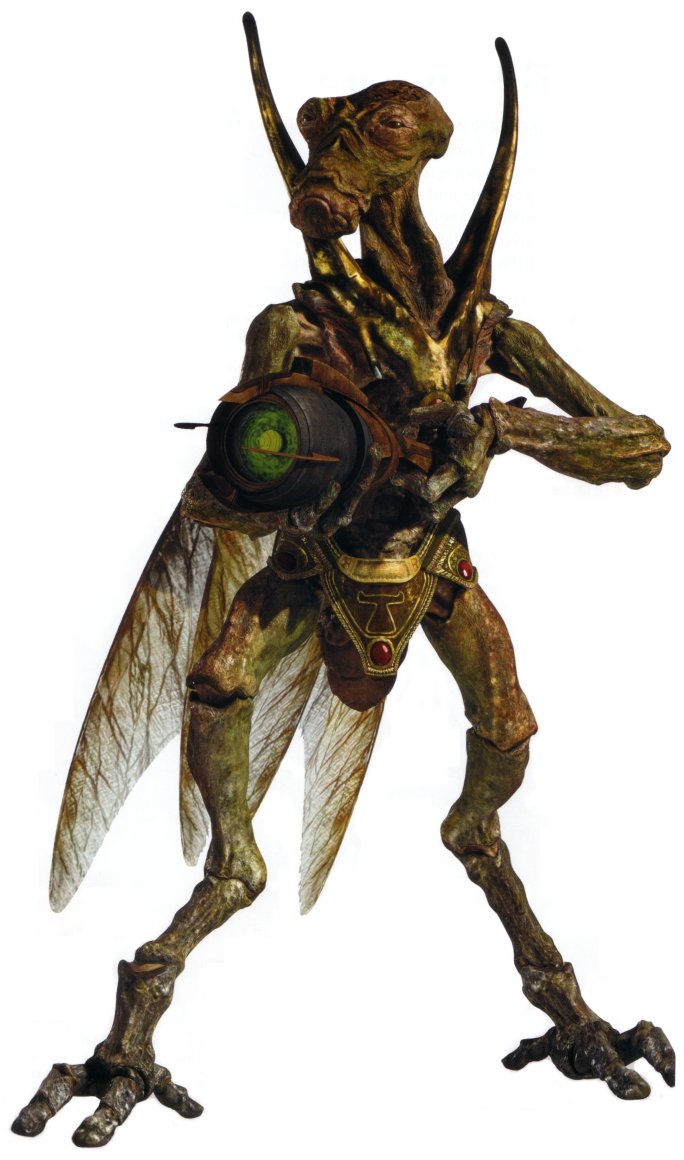The Force is strong with this one…
May the Fourth be with you! Just a few short days after celebrating Alien Day, Star Wars fans are likely celebrating this pun-tacular day with wookiee calls and reveling in the number of movies they can enjoy. The most famous characters in the movies, the Jedi, are able to control the energy of the universe (the Force) to generate powers on par with magic, as well as enhance their physical speed and strength. While there is no indication that insects are Force sensitive, they do have some parallel powers.
The Force equips the Jedi with incredible speed and reflexes, enabling them to dodge or deflect blaster fire. However, when it comes to proportional speed, the world’s fastest insect would leave the most powerful Jedi in its dust. An Australian tiger beetle, Cicindela eburneola, has been clocked as the fastest running insect as measured by proportional speed. C. eburneola’s sprinting speed is 171 body lengths per second (4.16 mph) (Kamoun and Hogenhout 1996). At this speed, the beetle’s brain is too slow to process visual information, so it runs itself blind and must periodically stop to make sure it is going in the right direction (Gilbert 1997). If I could run at that proportional speed, I’d be running at 730 mph, just 40 mph short of breaking the sound barrier. In terms of relative speed, the Californian mite Paratarsotomus macropalpis blows the tiger beetle’s top speed out of the water at an astonishing 322 body lengths/second (Rubin et al. 2014). If I could match the mite for proportional speed, I could run at 1370 mph, fast enough to dash the 149 miles from Guardian’s Superior WI office to its St. Paul MN office in about six and a half minutes.
While tiger beetles and mites are lean mean speedsters, the horned male dung beetle Onthophagus taurus is the current record-holder for proportionally strongest insect. Horned males sumo wrestle in females’ burrows, locking horns and trying to push their rival backwards. Each beetle alternately braces itself against its rival’s shoves and shoves itself. Researchers set up little tractor-pulls with the beetles, tugging them backward through tunnels with thread leashes to cause them to brace themselves as if they were fighting, and measuring the tension on the leash (Knell and Simmons 2010). The holding strength of the beetles varied depending on whether they were horned or hornless and how well fed they were, with the strongest well-fed horned beetles successfully bracing against 1141 times its body weight in force. If I were that proportionally strong, I could simultaneously hold three average-sized adult humpback whales.
Of course, the Jedi are not all about speed and strength, and can use the force to persuade others to do their bidding. Mind-controlling parasitoid wasps are surprisingly abundant, to the point that an entire blog could be dedicated entirely to them (Entomology Uncensored is a cool Facebook page that is largely weird wasp centered). As an example, I will particularly highlight Dinocampus coccinellae, a tiny wasp that parasitizes lady beetles. A prospective mother wasp stings a lady beetle, injecting into it an egg and a slurry of virus particles (Dheilly et al. 2015). Her egg hatches, with the young feeding on the still-living lady beetle, while the virus infects the lady beetle’s nervous system. When the larva matures, it crawls out the tip of the lady beetle’s abdomen and spins a cocoon. Meanwhile, the viruses mind-control the lady beetle and cause it to perch on its parasite’s cocoon, twitching and kicking at any other insects that approach.
References:
Dheilly, N.M., Maure, F., Ravallec, M., Galinier, R., Doyon, J., Duval, D., Leger, L., Volkoff, A.N., Missé, D., Nidelet, S. and Demolombe, V., 2015. Who is the puppet master? Replication of a parasitic wasp-associated virus correlates with host behaviour manipulation. Proceedings of the Royal Society of London B: Biological Sciences, 282(1803), p.20142773.
Gilbert, C., 1997. Visual control of cursorial prey pursuit by tiger beetles (Cicindelidae). Journal of Comparative Physiology A, 181(3), pp.217-230.
Kamoun, S. and Hogenhout, S.A., 1996. Flightlessness and rapid terrestrial locomotion in tiger beetles of the Cicindela L. subgenus Rivacindela van Nidek from saline habitats of Australia (Coleoptera: Cicindelidae). The Coleopterists’ Bulletin, pp.221-230.
Knell, R.J. and Simmons, L.W., 2010. Mating tactics determine patterns of condition dependence in a dimorphic horned beetle. Proceedings of the Royal Society of London B: Biological Sciences, p.rspb20100257.
Rubin, S., Wright, J., Young, M., Whitaker, D. and Ahn, A., 2014. Exceptional locomotory performance in Paratarsotomus macropalpis mites (878.1). The FASEB Journal, 28(1 Supplement), pp.878-1.






